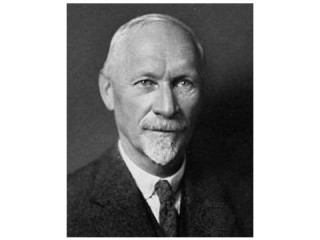
Jan Smuts biography
Date of birth : 1870-05-24
Date of death : 1950-09-11
Birthplace : Bovenplaats, Malmesbury, Cape Colony
Nationality : South African
Category : Politics
Last modified : 2011-07-18
Credited as : Politician, Prime minister of South Africa,
Jan Smuts the second son of Jacobus Abraham Smuts, a prosperous farmer and a member of the Cape Legislative Assembly, was born on May 24, 1870, on a farm in the Malmesbury district of the Cape Colony (Cape Province). He began his formal education at the age of 12, when he entered a boarding school at Riebeek West. Although he was shy and physically weak, Smuts possessed a great zeal for learning. Four years later he entered Victoria College at Stellenbosch and there compiled a brilliant academic record. While a student at Stellenbosch, Smuts met Sybella Margaretha Krige, whom he later married. In 1891 Smuts won the Ebden scholarship and went to Christ's College, Cambridge, to study law.
In 1895 Smuts returned to South Africa, settled at Cape Town, and was admitted to the bar. Because of his reserved ways, however, he was not immediately successful; consequently, he developed an interest in journalism and politics. In politics he was initially attracted to Cecil Rhodes, who was prime minister at that time. After the Jameson Raid was made and Rhodes's part in it became known, Smuts repudiated Rhodes. He moved to Johannesburg and resumed the practice of law.
In Johannesburg, Smuts quickly won the recognition of Paul Kruger, the president of Transvaal, and in 1898 Smuts was appointed state attorney of the republic. He became attached to the Boer cause and, when the Boer War began, published a propaganda pamphlet in 1899 entitled A Century of Wrong. During the war Smuts discovered that he was a natural fighter, and he became a leader of one of the most successful of the Boers' guerrilla bands. At the end of the war, in 1902, Smuts participated in the peace negotiations at Vereeniging.
After the war Smuts returned to Pretoria, Transvaal, and once again practiced law. A few years later he reentered politics. In 1904 Smuts joined Louis Botha to launch a political party, Het Volk (The People). The party's aim was to work for responsible government. The following year Smuts was sent to England to carry his party's demands directly to Henry Campbell-Bannerman's new Liberal government. When the British prime minister approved of the Het Volk request, not only did the Boer Republic regain its self-government but also Smuts regained his British sympathies.
For the 15-year period from 1904 to 1919, the Smuts-Botha combination was the great fact of South African politics. These two former Boer generals collaborated to produce qualities needed for political leadership. Smuts was a scholar and a reformer in politics who combined vision and ambition; he remained the source of ideas and the power behind the scenes. In 1906, when Transvaal was granted responsible government, he supported Botha for the premiership of the republic, and he himself became colonial secretary and minister of education. Later, when his great dream of the Union of South Africa became a reality in 1910, Smuts worked hard to have Botha accepted as the first premier of South Africa. He himself accepted the portfolios of mines, defense, and interior. Botha and Smuts merged their Het Volk party with other provincial parties and formed the South African party.
At the outbreak of World War I, the South African Parliament voted to enter the hostilities on Britain's side. Some of the Boers, however, disapproved of this policy and revolted. Smuts participated in the suppression of this rebellion. Afterward Botha and Smuts resumed their campaign against the Germans in Southwest Africa. The campaign was a striking success, and once again Smuts was hailed as a brilliant soldier. In 1916 he accepted the command of the imperial forces in East Africa and was commissioned a lieutenant general in the British army. The following year, at Botha's request, he proceeded to England as the South African representative to the forthcoming Imperial Conference. The British prime minister, David Lloyd George, offered Smuts a position in the British War Cabinet.
By the end of the war Smuts had acquired his great reputation as a soldier and statesman. He published an influential pamphlet in December 1918 entitled. The League of Nations: A Practical Suggestion, and he played an important role at the Paris Peace Conference in 1919. A champion of a lenient peace, he was greatly disillusioned by the Versailles settlement.
When Botha died in August 1919, Smuts became prime minister of South Africa. In 1924, however, he was defeated, and he then began a long period of opposition. During these years his fame as a scholar continued to grow. In 1925 Smuts wrote Holism and Evolution, a philosophical work in which he offered an explanation of the unitary character of all things. Smuts was reconciled with his old opponent Gen. James Hertzog in 1933. A year later they formed a fusion party, the United South African National party. Smuts served until 1939 as minister of justice. Upon the outbreak of World War II, Hertzog wanted to declare South Africa neutral. Smuts opposed this idea, and in September 1939 he was called to the premiership. As during World War I, he displayed qualities that marked him as a war leader of the first order. At the end of the war, Smuts went to San Francisco and helped to create the United Nations.
In May 1950 Smuts suffered a heart attack. He died on September 11.
















